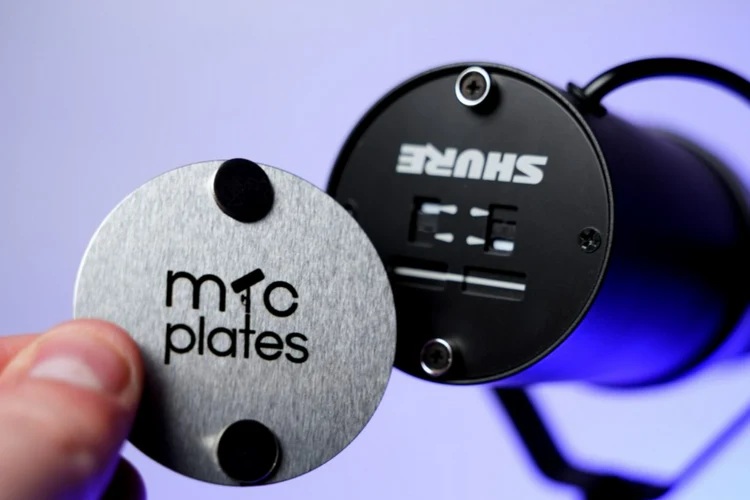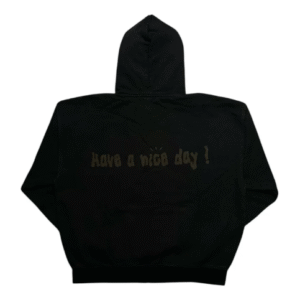The Shure SM7B is unarguably one of the most versatile microphones out there, commonly used by both pros in commercial studios and amateurs starting a podcast. The SM7B is adaptable to different voices, tonal qualities, and instruments and has become commonplace in many genres and applications. An often neglected accessory that can significantly affect its functionality is the microphone cover. From policing plosives in speech to influencing how slight tonal characteristics are picked up, the Custom Mic cover for Shure SM7B can make a huge impact. By understanding how mic covers respond to a microphone’s naturally occurring characteristics, creators can make better decisions when using the SHM7B for vocals and instruments.
The SM7B and Its Dynamic Personality
The SM7B’s design offers a much different perspective than a sensitive condenser microphone that grabs all the subtleties (every cough). To be precise, the SM7B is a dynamic microphone with a cardioid polar pattern that utilizes internal air suspension shock isolation, and it is more resistant to background noise and works great with a close-mic application. Still, vocal timbre, vocal intensity, and vocal style create challenges like plosives, sibilance, or breath noise. Likewise, when recording instruments, sometimes the raw tones get too edgy or too smooth with small changes in treatment. Microphone covers shape sonic output in ways that highlight clarity and balance rather than purity detrimental to the vocal chains.
SM7B Mic Cover Impact on Sound
The first thing to grasp here is that foam or fabric covers slightly attenuate high frequencies. This is not a flaw but a feature of the design. The impact of the SM7B cover on sound is as a filter of harsh or distracting elements in the audio. In vocals, it means a smoother transition on the “s” sounds and softer plosives when the singer pronounces words starting with “p” or “b.”
On instruments, it helps to dull transients, the immediate sounds at the beginning of the note. An acoustic guitar strum may sound warmer and less brittle with a mic cover, and brass instruments may benefit from reduced piercing tones in the upper frequency registers.
Adapting SM7B for Various Recordings
The versatility of the SM7B is one of the best aspects of the microphone. Depending on the cover you use, you can alter the mic’s response when recording to fit the particular style you want to accomplish. Here are a few situations for how we adapt the SM7B for varying recordings:
- Vocalists with strong projection—singers with highly projected vocals can, sometimes, end up distorting in an untreated recording. A thicker cover will help; using the cover slightly compresses the transients, making the balance of their vocal sound closer to what they intended
- Soft-spoken speakers or podcasters—you may only need a regular or thinner foam cover to avoid dulling some other precious details in softer tones while ensuring clarity.
- Recording acoustic guitar—the cover is great to keep warmer qualities while allowing you to shell out some of the emphasis on string buzz.
- Brass and wind instruments—a cover minimizes air blasts that come with these instruments, like, say, saxophones or trumpets.
- Drums and percussion—Close-miking snare or toms with an SM7B and foam cover keeps everything from sounding harsh while maintaining depth.
This level of adaptability of a mic cover makes it more of a tool for creatively altering sound than an accessory.
Recording Instruments with SM7B
Though it is primarily a vocal microphone, many engineers will also trust this microphone for recording instruments using the SM7B. It is a dynamic mic that can easily handle high SPLs, so it works really well for electric guitar cabinets, bass amps, or even a kick drum. However, without a cover, recording instruments close up will often introduce unwanted mechanical noise (like air bursts, string vibrations, or metallic rings). When you put a cover on the mic, it acts like a natural filter, which adds warmth and diminishes the unwanted harshness. For example:
- Electric guitars sound tighter, particularly at high gain—a raw tone at high gain can get ugly.
- Woodwinds work smoother and don’t exaggerate breath or air sounds.
- Percussion sounds punchy but loses the brash and shrill noise when close-miked.
Audio professionals tend to keep different mic covers for the SM7B around depending on what type of recording session they are doing because of this consistency.
Why a Custom Mic Cover for the Shure SM7B Matters
Custom possibilities add new levels of sonic control, although Shure makes standard covers. A custom mic cover fabricated for the Shure SM7B lets an artist or engineer choose foam density, layering, and even fabric type depending on what they want to achieve. Podcasters could have a high-density foam cover that doesn’t let in unwanted noise but keeps the voices warm, and musicians can have thinner covers for more brightness while still having control over plosives. Customizing the aesthetic can also help creators establish a unique identity in the studio—function and form.
Toward Precision and Personalization
The SM7B is a microphone that can help make creativity happen between a professional and personal studio recording, but only to its fullest capability if paired with some proper accessories. The mic cover enhances the already great product and provides soundscapes that can be varied between different voices and sounds of various sounds. By assessing the impact sound the SM7B mic cover produces, experimenting with the adaptation of the SM7B for different recording purposes, and giving oneself the advantage of a well-thought-out setup when using the SM7B for recording multiple instruments, a content creator can achieve perfectionism beyond the average every-take recording. With the addition of a custom mic cover for the Shure SM7B, we can take the personalization of unique sound further than just the style factor. We can enhance and remind ourselves of our constructed sound identity.
The SM7B is more than a microphone. It is a versatile asset. The mic cover is in no way just a protective layer but rather a reference to the brush stroke that is made by the artist (you), whether it be telling a story, singing a song, strumming a tune, or breathing life into your piece.
- How the SM7B Mic Cover Affects Different Vocal Styles and Instruments
- On instruments, it helps to dull transients, the immediate sounds at the beginning of the note. An acoustic guitar strum may sound warmer and less brittle with a mic cover, and brass instruments may benefit from reduced piercing tones in the upper frequency registers.
- Custom Mic cover for Shure SM7B
Related posts:
 Revolutionizing Dental Practice Management with Jaza’s AI Receptionist for Dentists in the USA
Revolutionizing Dental Practice Management with Jaza’s AI Receptionist for Dentists in the USA
 Complete Guide to Garage Services in Iowa City: What You Need to Know
Complete Guide to Garage Services in Iowa City: What You Need to Know
 Elegant Blooms for Every Moment – Premium Flower Delivery in Melbourne
Elegant Blooms for Every Moment – Premium Flower Delivery in Melbourne
 Benefits of International Freight Forwarder China To Singapore for Businesses
Benefits of International Freight Forwarder China To Singapore for Businesses
 Detailed Market Analysis on Air Conditioner Market | Share, Size & Outlook
Detailed Market Analysis on Air Conditioner Market | Share, Size & Outlook
 Why Chiropractic Care Is Essential for Long-Term Wellness in Scarborough
Why Chiropractic Care Is Essential for Long-Term Wellness in Scarborough
 How to Picking the Right PCB Assembly Manufacturer (Helpful Info)
How to Picking the Right PCB Assembly Manufacturer (Helpful Info)
 How Property Managers Use Online Portals to Improve Service and exprience
How Property Managers Use Online Portals to Improve Service and exprience



